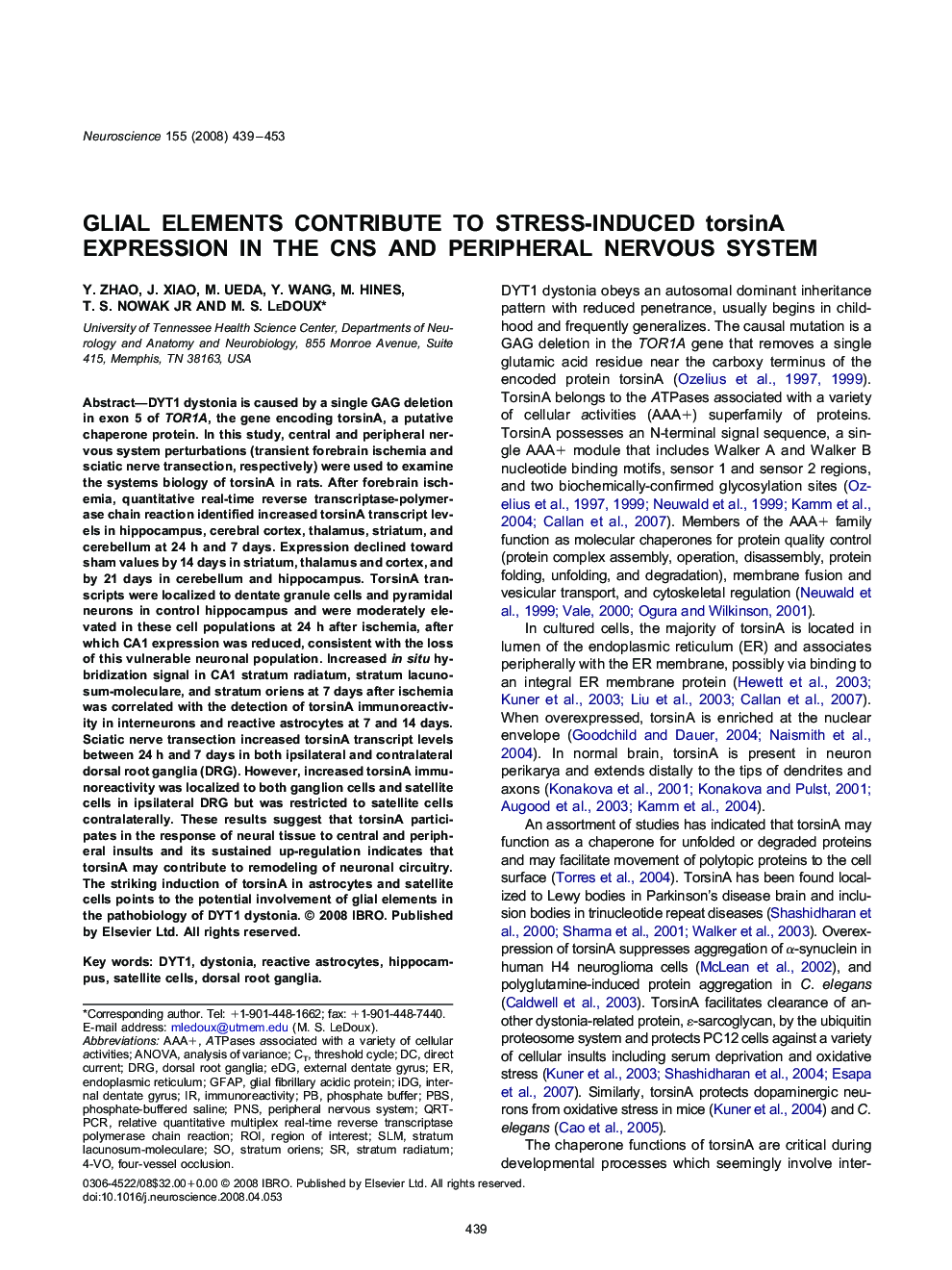| کد مقاله | کد نشریه | سال انتشار | مقاله انگلیسی | نسخه تمام متن |
|---|---|---|---|---|
| 6278150 | 1295796 | 2008 | 15 صفحه PDF | دانلود رایگان |
عنوان انگلیسی مقاله ISI
Glial elements contribute to stress-induced torsinA expression in the CNS and peripheral nervous system
دانلود مقاله + سفارش ترجمه
دانلود مقاله ISI انگلیسی
رایگان برای ایرانیان
کلمات کلیدی
DYT1PBSDRGGFAPROISLMstratum oriensqRT-PCRIDGEDG4-VO - 4-WOAAA+ - AAA +stratum radiatum - stratat radiatumReactive astrocytes - آستروسیتهای واکنشیfour-vessel occlusion - انسداد چهار رگImmunoreactivity - ایمنی فعالphosphate buffer - بافر فسفاتanalysis of variance - تحلیل واریانسANOVA - تحلیل واریانس Analysis of varianceDC, Direct current - جریان مستقیم، جریان پیوستهdystonia - دیستونی، بدقَوامی ماهیچههاSatellite cells - سلول های ماهواره ایperipheral nervous system - سیستم عصبی پیرامونیendoplasmic reticulum - شبکه آندوپلاسمی Stratum lacunosum-moleculare - لاکونوسوم-لایه لایه مولکولیPhosphate-buffered saline - محلول نمک فسفات با خاصیت بافریregion of interest - منطقه مورد نظرHippocampus - هیپوکامپ Glial fibrillary acidic protein - پروتئین اسیدی فیبریلاسیون گلایالthreshold cycle - چرخه آستانهPNS - کارمندان دولتdorsal root ganglia - گانگلیس ریشه پشتی
موضوعات مرتبط
علوم زیستی و بیوفناوری
علم عصب شناسی
علوم اعصاب (عمومی)
پیش نمایش صفحه اول مقاله

چکیده انگلیسی
DYT1 dystonia is caused by a single GAG deletion in exon 5 of TOR1A, the gene encoding torsinA, a putative chaperone protein. In this study, central and peripheral nervous system perturbations (transient forebrain ischemia and sciatic nerve transection, respectively) were used to examine the systems biology of torsinA in rats. After forebrain ischemia, quantitative real-time reverse transcriptase-polymerase chain reaction identified increased torsinA transcript levels in hippocampus, cerebral cortex, thalamus, striatum, and cerebellum at 24 h and 7 days. Expression declined toward sham values by 14 days in striatum, thalamus and cortex, and by 21 days in cerebellum and hippocampus. TorsinA transcripts were localized to dentate granule cells and pyramidal neurons in control hippocampus and were moderately elevated in these cell populations at 24 h after ischemia, after which CA1 expression was reduced, consistent with the loss of this vulnerable neuronal population. Increased in situ hybridization signal in CA1 stratum radiatum, stratum lacunosum-moleculare, and stratum oriens at 7 days after ischemia was correlated with the detection of torsinA immunoreactivity in interneurons and reactive astrocytes at 7 and 14 days. Sciatic nerve transection increased torsinA transcript levels between 24 h and 7 days in both ipsilateral and contralateral dorsal root ganglia (DRG). However, increased torsinA immunoreactivity was localized to both ganglion cells and satellite cells in ipsilateral DRG but was restricted to satellite cells contralaterally. These results suggest that torsinA participates in the response of neural tissue to central and peripheral insults and its sustained up-regulation indicates that torsinA may contribute to remodeling of neuronal circuitry. The striking induction of torsinA in astrocytes and satellite cells points to the potential involvement of glial elements in the pathobiology of DYT1 dystonia.
ناشر
Database: Elsevier - ScienceDirect (ساینس دایرکت)
Journal: Neuroscience - Volume 155, Issue 2, 13 August 2008, Pages 439-453
Journal: Neuroscience - Volume 155, Issue 2, 13 August 2008, Pages 439-453
نویسندگان
Y. Zhao, J. Xiao, M. Ueda, Y. Wang, M. Hines, T.S. Jr, M.S. LeDoux,